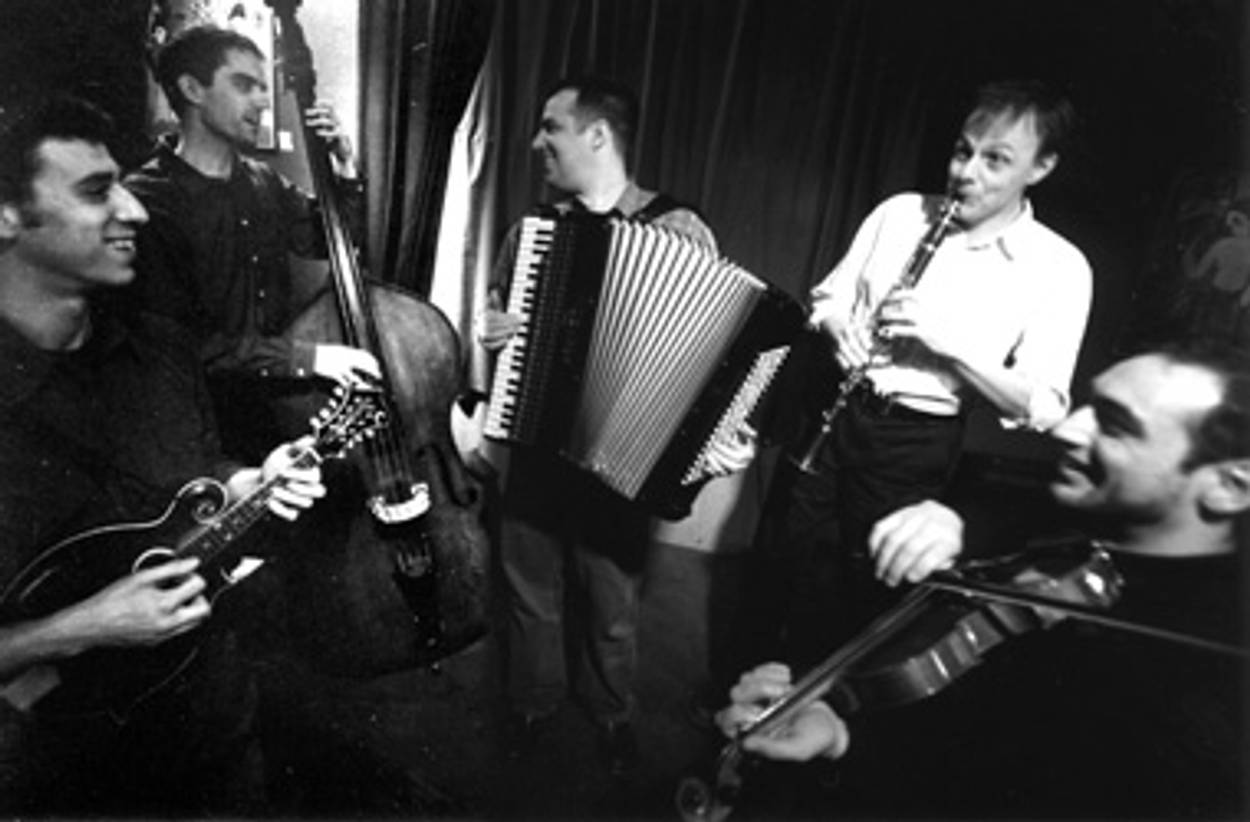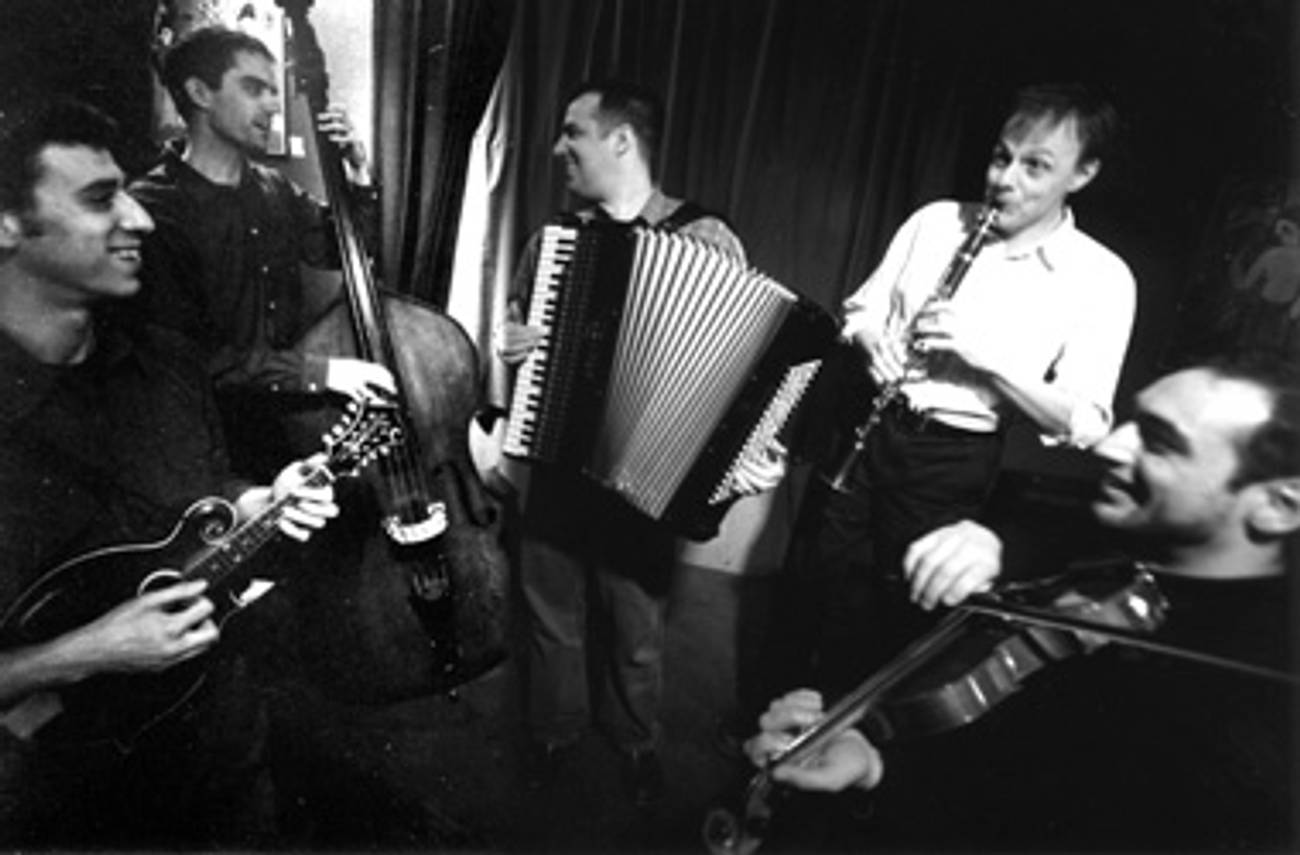Havana Nagila
New sounds in Jewish-Latin fusion




And now for a lightning round of Jewish geography:
The Cuban-American percussionist Roberto Juan Rodriguez has released Timba Talmud, the third in a series of “Cuban klezmer” albums on John Zorn’s Tzadik label. Rodriguez is not Jewish, but several of his bandmates are, including the violinist and composer Jonathan Keren, who last year premiered a contemporary classical work inspired by kabbalistic texts.
This, however, is a red herring.
More significantly, in 2006, Rodriguez recorded Oy Vey! Ole!, a Jewish-Latin fusion album, with Irving Fields, the nonagenarian lounge pianist whose reputation was revived by the rerelease of Bagels and Bongos, a recording that clearly demonstrated both the upside and downside of setting traditional Jewish melodies to Cuban dance rhythms when it first appeared in 1959, at the height of the mambo craze.
Fields was no one-trick pony, however. A veteran of the cruise ship circuit, he also composed a series of tunes inspired by various ports of call. “Melody Cruise Around the World” was never commercially released, but a cassette recording of Fields playing and talking his way through the suite found its way into the hands of the Canadian mandolinist and tsimbl player Eric Stein by way of Socalled, the Montreal-based DJ who has collaborated with Fields on a number of projects. Stein, who is artistic director of the Ashkenaz Festival, also leads Beyond the Pale, a Toronto-based ensemble that deals in Jewish, Balkan, and American roots music. They, too, have released a third album, Postcards, which includes Stein’s arrangement of Fields’ “Turkish Delight,” a stop on the melody cruise that was inspired by a shipboard visit to—well, you can figure that one out for yourself.
And there you have it: a New York-based Cuban-American who was raised Catholic and developed a taste for Jewish music and culture while living in Florida, and a former rock bassist whose grandfather emigrated to Canada from Poland, are united by their shared interest in an obscure Jewish cocktail pianist. Yet Rodriguez and Stein have more in common than just that. As their new releases indicate, both men have an uncommon knack for assembling diverse bands and harnessing that diversity to generate distinctive sounds.
The latest iteration of Sexteto Rodriguez, the band that Rodriguez uses to further his ongoing experiment in Juban music, is evenly split between Cubans and Israelis. The music they make together is as structurally elegant as the material on Rodriguez’s previous Cuban klezmer releases, and displays the same fascinating combination of Cuban song forms and rhythms with elements of Ashkenazi and Sephardic melody. But it is much more dance-oriented, and that is no accident.
“Dance is a big part of both Cuban and Jewish musical cultures,” says Rodriguez, whose first gig involved playing Yiddish theater music in Miami, and who remembers seeing scads of elderly Jews dancing the rumba and the cha-cha at Wolfie’s Deli on Collins Avenue in the wee hours of the morning. “But Americans are intimidated by dance. My goal is to eliminate that.” To that end, he recruited conga player Igor Arias Baro and bassist Bernie Minoso, who spent seven years with Tito Puente, to bump the hip-wiggling quotient up a notch. It worked.
In some cases, like the cheese-filled “Mambo Kitsch” or the languorous “Kids Club Cha-Cha (Para Susie),” the rhythmic contents of the tunes are clearly spelled out. In others, like “Babailon!,” a snappy merengue, you’re left to puzzle them out on your own. Either way, you’ll hardly be able to keep still. Rodriguez hadn’t initially intended to record another album of Jewish-Cuban music; he’s got a lot of other stuff on his plate, including a duo with Ladino rocker Sarah Aroeste (the two were finalists in last year’s Festiladino in Jerusalem, and they’ve initiated the Cuba Jewish Music Library project to bring recordings of Jewish music to Cuban synagogues). But he liked his new band so much that he couldn’t resist returning to the same well one more time, and it’s easy to see why.
Beyond the Pale’s Postcards is pretty irresistible, too, though for entirely different reasons. The band (whose name alludes both to the Pale of Settlement and to the ensemble’s transgressive approach to musical boundaries) skillfully integrates klezmer, Romani, and Balkan music (also a sextet, the band includes three Serbians), along with intimations of bluegrass, jazz, funk, and chamber music. On “Katarina,” a rhythmically tripping tune in 7/8 time by violinist Aleksander Gajic, the band seems to touch almost all of these bases at once, while on the traditional “Magura,” their Eastern European bias shows most clearly; though even here, a hint of Dixieland jazz emerges amid the trilling accordion, violin, and clarinet lines. There are strong historical ties between several of these traditions, but there’s nothing in any one of them that sounds quite like what Beyond the Pale produces.
That puts Stein and his collaborators in the same league as Rodriguez and his Cubano-Israeli outfit. Both groups deal in musical traditions that have had plenty of previous contact (Irving Fields was not the first, the last, or even the most marvelous Jew to take a shine to Latin music), but take them places where they have never been—either alone or together.
Alexander Gelfand is a recovering ethnomusicologist, a sometime jazz pianist, and a former West African drummer. His work has appeared in the New York Times, the Chicago Tribune, the Forward, and elsewhere.
Alexander Gelfand is a recovering ethnomusicologist, a sometime jazz pianist, and a former West African drummer. His work has appeared in the New York Times, the Chicago Tribune, the Forward, and elsewhere.